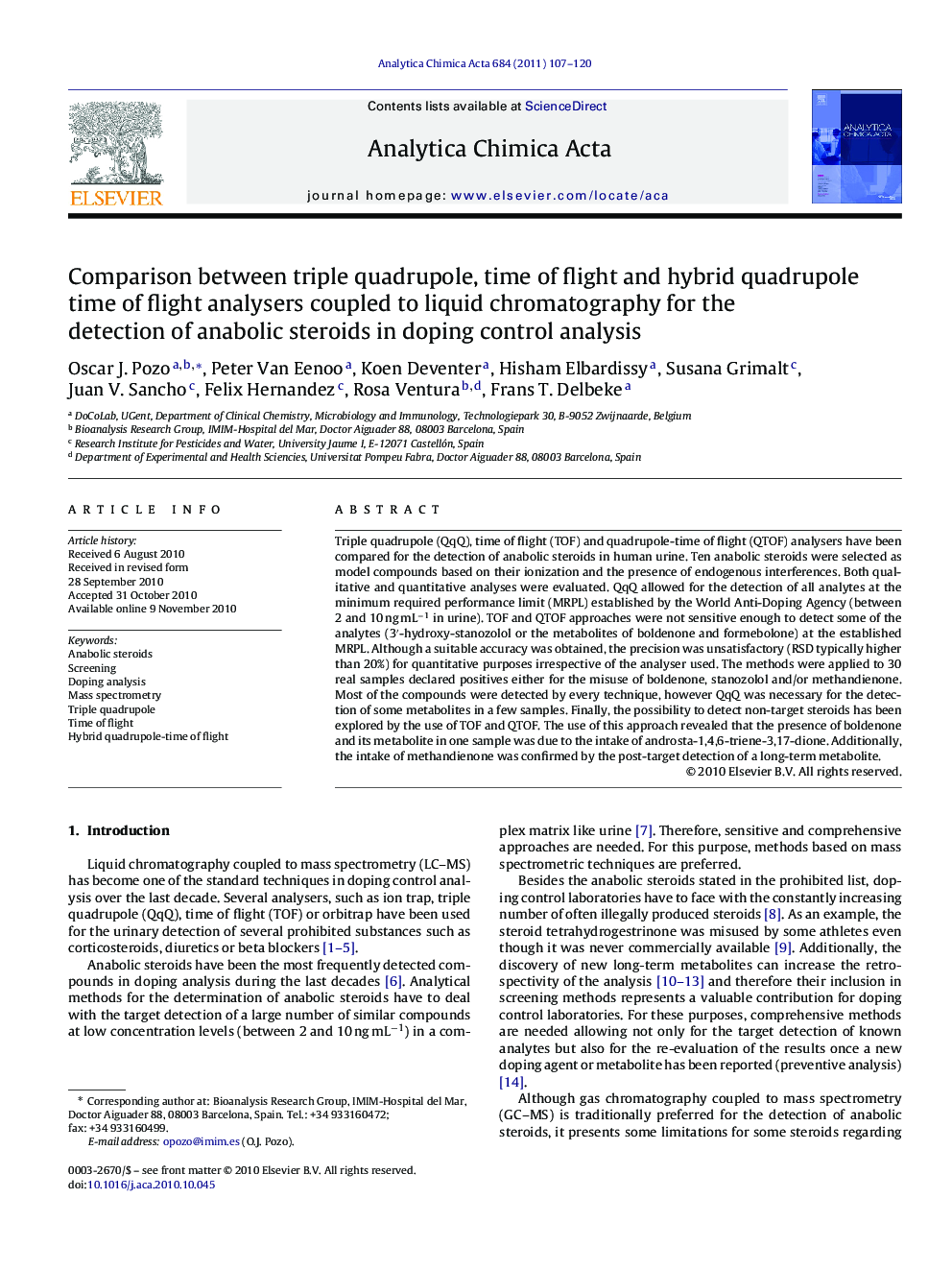| Article ID | Journal | Published Year | Pages | File Type |
|---|---|---|---|---|
| 1167578 | Analytica Chimica Acta | 2011 | 14 Pages |
Triple quadrupole (QqQ), time of flight (TOF) and quadrupole-time of flight (QTOF) analysers have been compared for the detection of anabolic steroids in human urine. Ten anabolic steroids were selected as model compounds based on their ionization and the presence of endogenous interferences. Both qualitative and quantitative analyses were evaluated. QqQ allowed for the detection of all analytes at the minimum required performance limit (MRPL) established by the World Anti-Doping Agency (between 2 and 10 ng mL−1 in urine). TOF and QTOF approaches were not sensitive enough to detect some of the analytes (3′-hydroxy-stanozolol or the metabolites of boldenone and formebolone) at the established MRPL. Although a suitable accuracy was obtained, the precision was unsatisfactory (RSD typically higher than 20%) for quantitative purposes irrespective of the analyser used. The methods were applied to 30 real samples declared positives either for the misuse of boldenone, stanozolol and/or methandienone. Most of the compounds were detected by every technique, however QqQ was necessary for the detection of some metabolites in a few samples. Finally, the possibility to detect non-target steroids has been explored by the use of TOF and QTOF. The use of this approach revealed that the presence of boldenone and its metabolite in one sample was due to the intake of androsta-1,4,6-triene-3,17-dione. Additionally, the intake of methandienone was confirmed by the post-target detection of a long-term metabolite.
